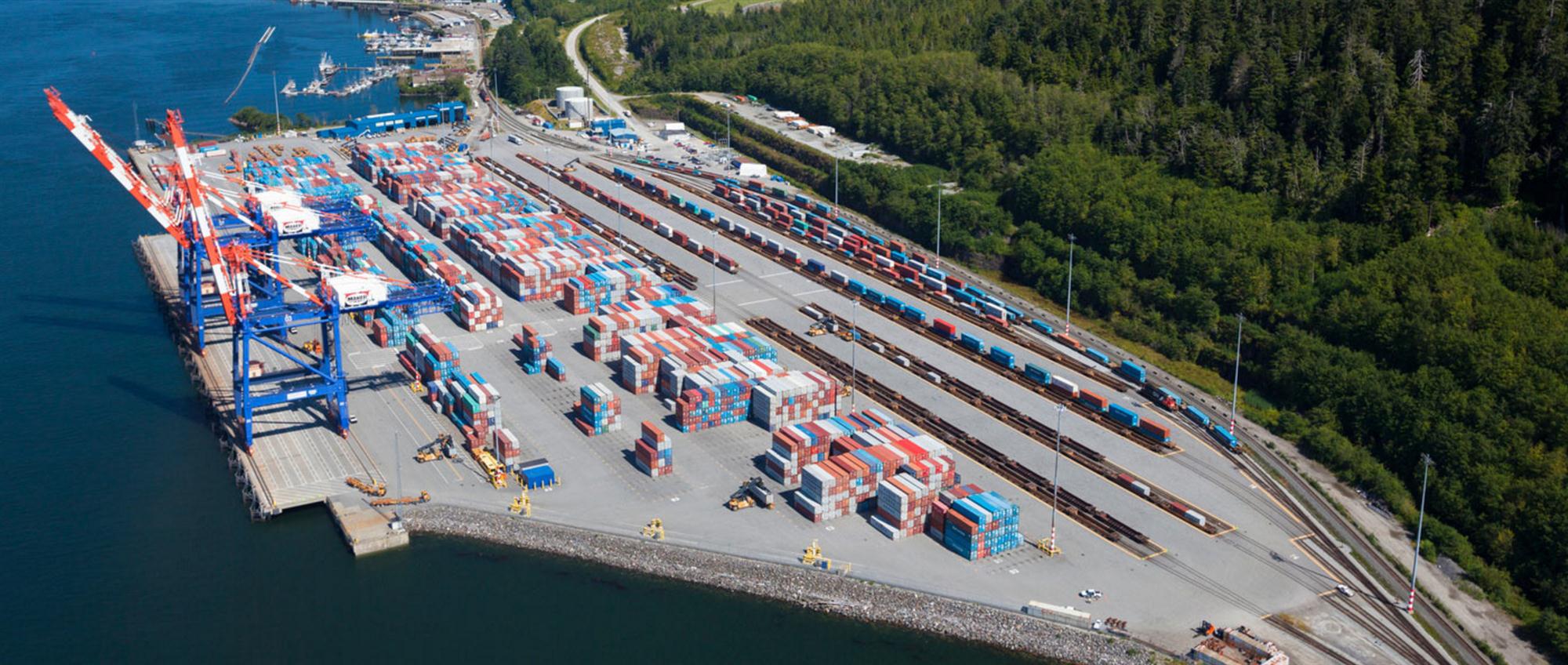The drumroll has been building up for a formal decision to accelerate the expansion of the Port of Prince Rupert’s capacity. On January 11, the port authority unveiled a study which indicates that a full-fledged expansion of its set-up would generate almost 5,000 new jobs. This followed revelations a month earlier that the port authority and DP World, which operates Prince Rupert’s Fairview Container Terminal, were already moving to study a new stage of expansion, although the current one is in full swing.
If all elements of the proposed expansion go ahead, Prince Rupert, located on British Columbia’s west coast near the point where the Canadian province meets the state of Alaska, would transform itself into a gateway capable of handling over 100 million tonnes a year, with its container capacity growing from currently 850,000 TEUs to 2.4 million TEUs. And if the parties involved are moving at full speed, this could be realized within just three years.
According to the port authority, Prince Rupert’s Fairview Terminal has been the fastest-growing container facility in North America. Since its inception in 2007, container throughput climbed to 616,176 TEUs in 2014, which was 15% over the total for 2013. Partly buoyed by diversions from US West Coast ports, its throughput in the January-November period last year was up 29% over the first 11 months of 2014.

While the lingering impact of the earlier problems at US West Coast ports helped to boost Prince Rupert’s volume, this was not the main driver, according to the port authority. It keeps pointing to Prince Rupert’s location, which makes it the closest North American container gateway to major ports in the Asia-Pacific region. Sailing time from Shanghai or Pusan to Prince Rupert is 11 days, one or two days less than to gateways further south like Vancouver, Seattle or Los Angeles/Long Beach.
Much of the traffic unloaded at Prince Rupert heads for the US market, carried on twice-daily intermodal train departures to Chicago and beyond.
The port’s trans-Pacific links are growing. Last October saw the first call of a new weekly service launched by the 2M alliance of Maersk Line and Mediterranean Shipping Co. This brought the number of weekly trans-Pacific strings serving Prince Rupert to four. It has two weekly services by COSCO and one by Hanjin.
To accommodate growth, the port planned for phase two of the Fairview terminal, a two-step process to augment its capacity. The first of these, known as the ‘Phase Two North expansion’, was kicked off only last year and is scheduled for completion in 2017. It will add a berth and boost the terminal’s capacity to 1.35 million TEUs.
However, the port authority and its terminal operator have apparently come to the conclusion that there is a need for further expansion already now, which prompted the joint decision to formally study what is referred to as the Phase Two South expansion.
This will take container capacity to 2.4 million TEUs and create an integrated platform capable of dealing with over 100 million tonnes of cargo in a year. The full project envisages the creation of two LNG terminals, breakbulk and project cargo terminals and possibly a third berth, besides import and export logistics parks and an expanded road, rail and utility corridor.
According to the port authority, the project could be completed in three to five years.
There were suggestions that the port was impatient with the pace of expansion pursued by Maher Terminals, which had been running the Fairview facility since its inception. DP World, which bought it from Maher for US$580 million last summer, seems to be better in tune with the port’s timetable for growth.
In any case, nobody would be surprised by an announcement from those parties that they have decided to push ahead with the next phase of expansion.
By Ian Putzger
Correspondent | Toronto




